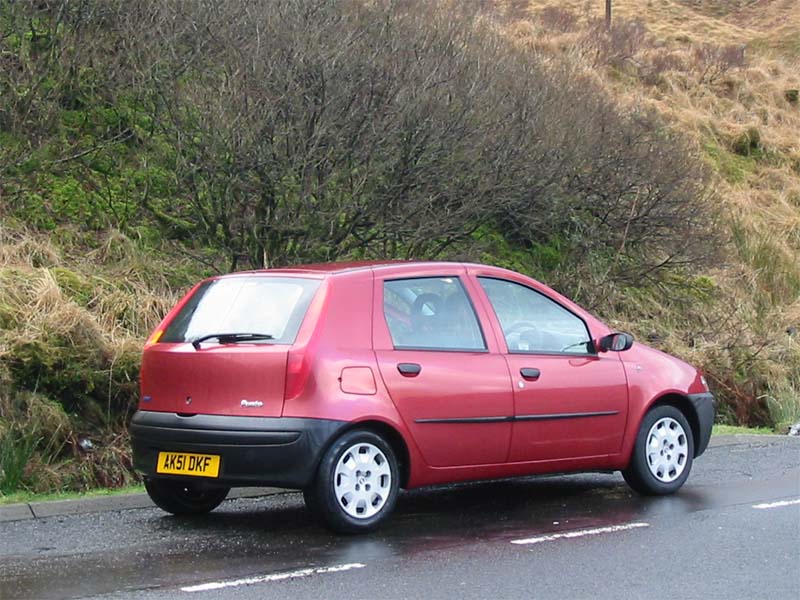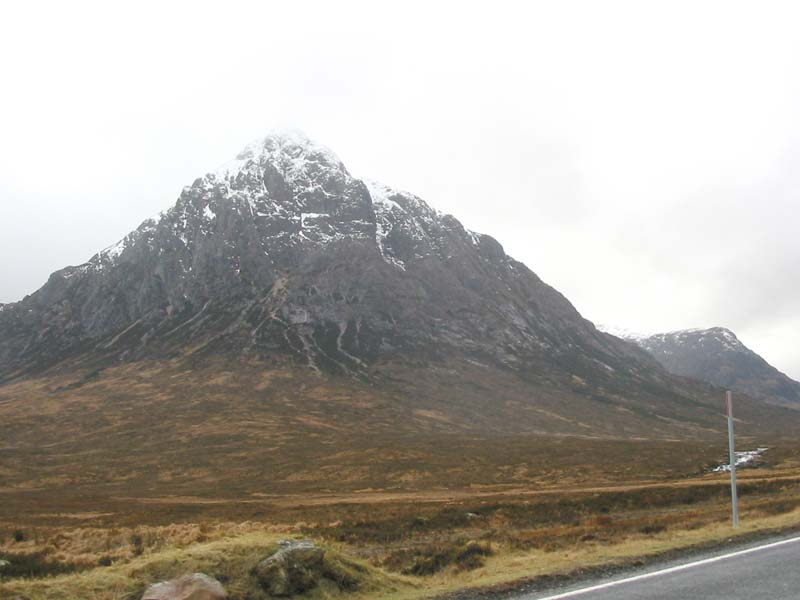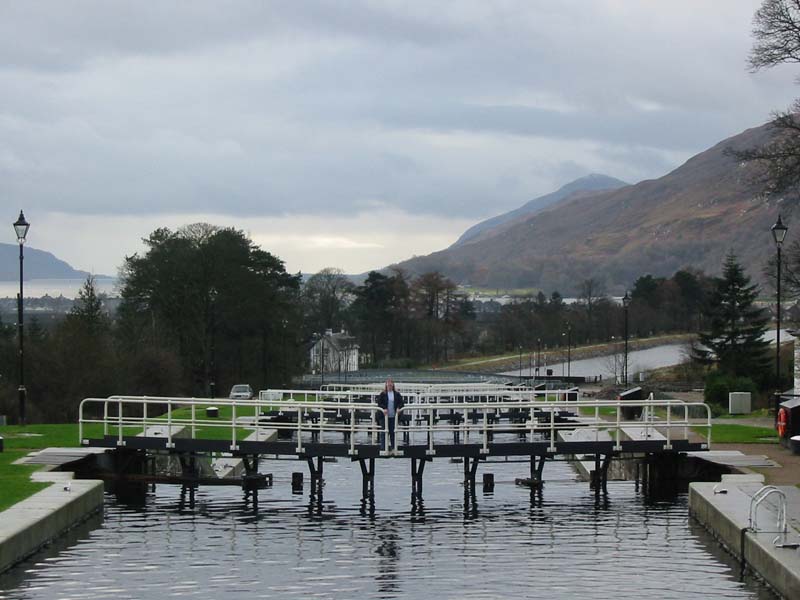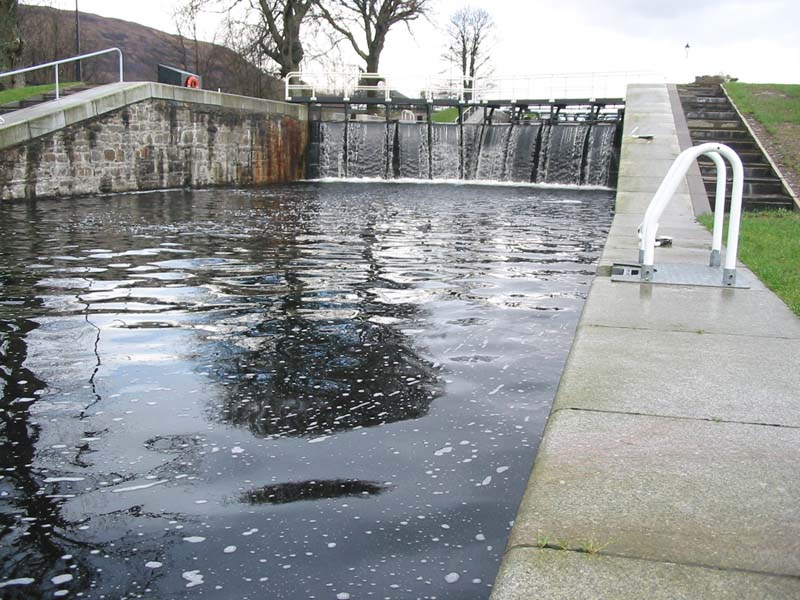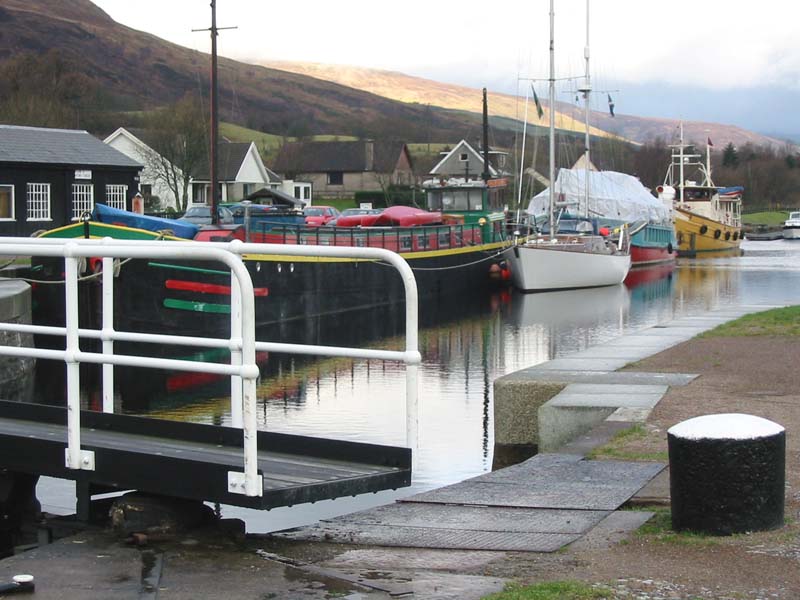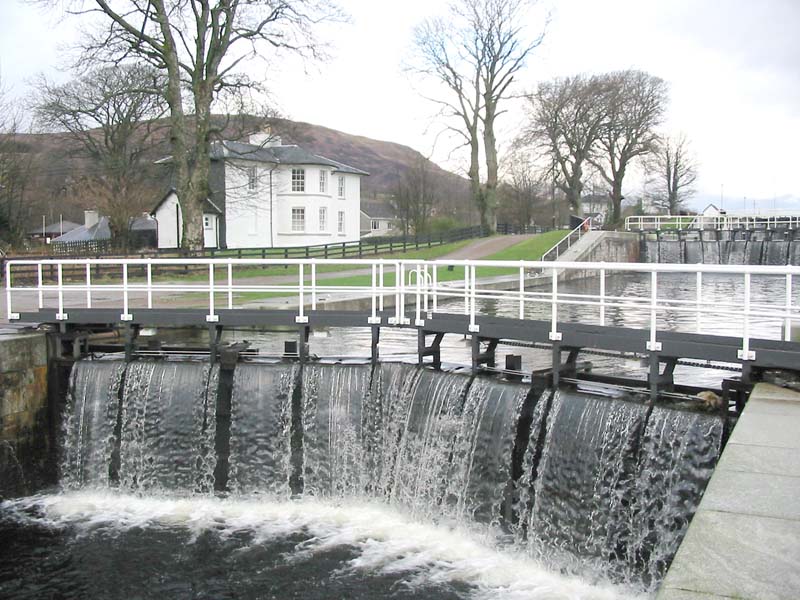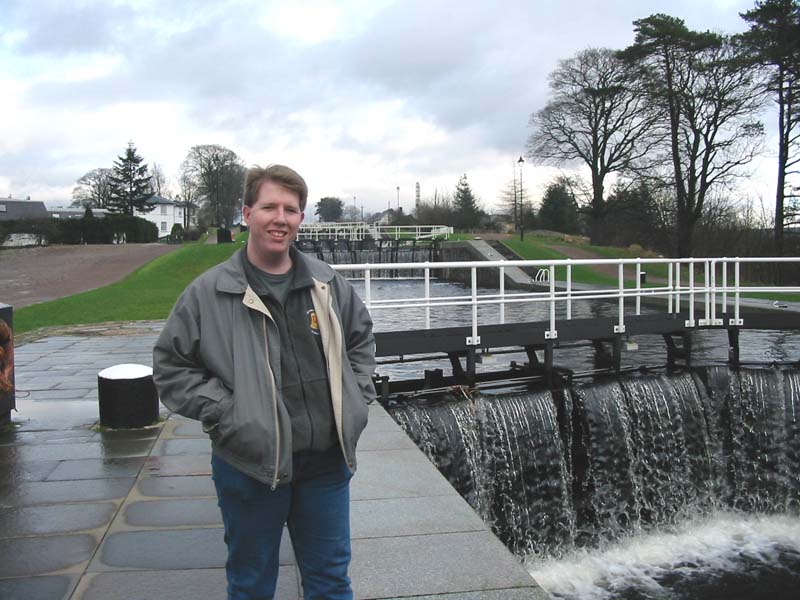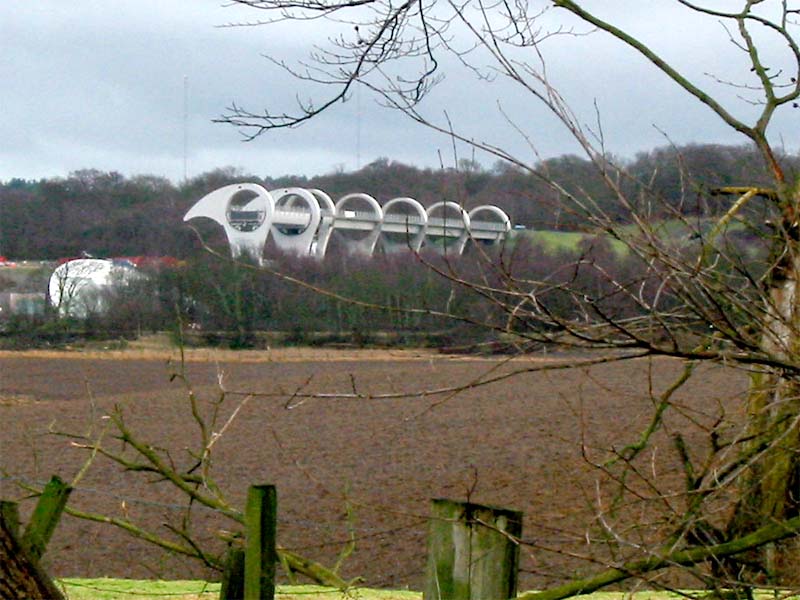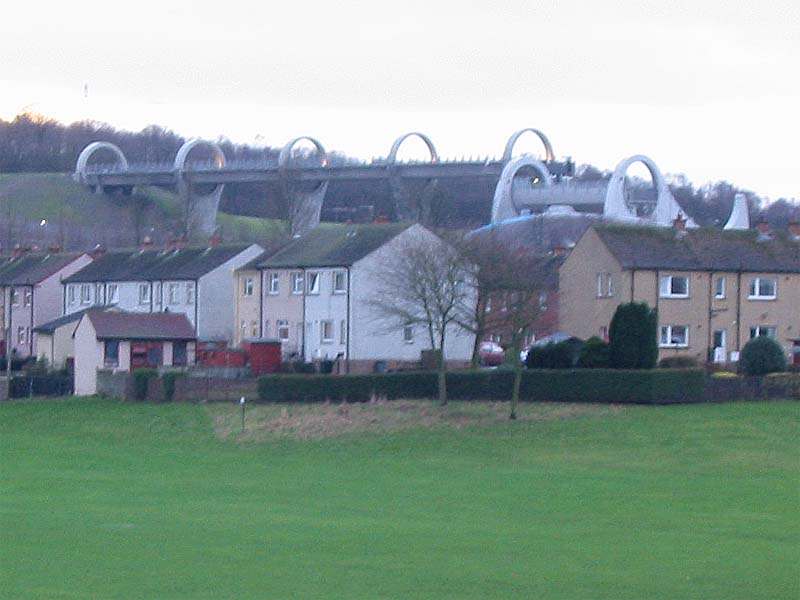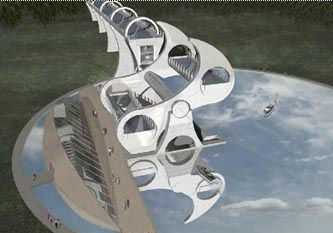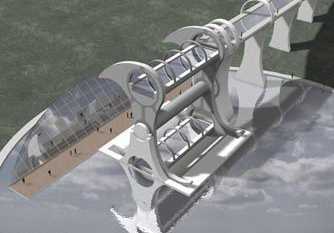Day Trip to Scotland9 February 2002With return flights at £4.99 each, we travelled to Scotland for the day on Stephen's birthday.
We drove up the coast to Greenock, across the Erkskine Bridge, and up the road of varying quality along the beautiful shores of Loch Lomond. We reached the mystical place of Crianlarich, signposted for 50 miles, but which we had never heard of. We continued generally northwestwards across the expanse of Rannoch Moor, and descended into Glencoe.
Approaching from the south-west, the first eight locks of the Calendonian Canal form a staircase, known as "Neptune's Staircase", and after lunch in Fort William, we drove the couple of kilometres to Banavie to see them.
We then drove back up Glencoe and eventually to Crianlarich, where we diverged from our outward route and travelled to Falkirk. From a 200-year-old engineering marvel on the Caledonian Canal, we had reached the site of one of the modern wonders of the inland waterways, the Millennium or Falkirk Wheel.
Previously there had been a long flight of locks to make the connection between the Forth & Clyde and Union Canals, but these have been destroyed and built upon. The Union Canal to the east has been extended, ending with a smaller number of locks and then a tunnel under the Antonine Wall, which emerges along the embankment and aqueduct shown, to the Wheel. Boats will be carried in the caissons of the wheel down into or up from a new basin, which will connect with the Forth & Clyde Canal to the west.
The Wheel will take about 15 minutes to rotate, vastly quicker than it would have taken to lift boats the 25m using locks.
The Wheel is due to open later in 2002. |
